Here at fxguide we like to celebrate not only effects-heavy tentpole films and productions, but also those with ‘invisible’ visual effects work. Some recent productions of that elk include Captain Phillips, Kick-Ass 2, Katy Perry’s Roar music video and the TV show Orphan Black. Check out below how the visual effects in each were achieved.
Captain Phillips
Paul Greengrass’ Captain Phillips tells the story of the 2009 hijacking of the US-flagged MV Maersk Alabama by Somali pirates. The director shot extensively on a replica container ship on Malta, but enhanced many scenes with seamless effects – a trademark of his work seen in films such as Green Zone, United 93 and two of the Bourne pics. Nvizible in London was one of the film’s effects vendors and we break down a few of their shots.
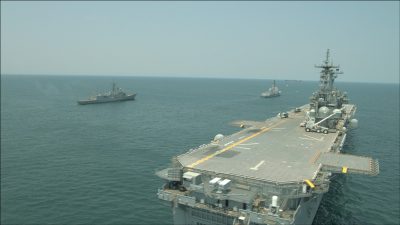
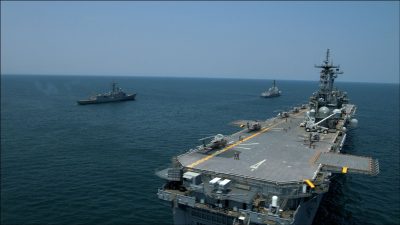
Aircraft carrier: “The carrier was shot empty,” says Nvizible visual effects supervisor Adam Rowland, “so we populated it with helicopters specific to that kind of aircraft carrier. We already had a chopper model that we were able to appropriate and change slightly to make it the right size. We also had some characters milling around on the surface, and we would give them the right clothes.” Screen inserts: The film required numerous screen inserts, including for on board the monitoring U.S. Navy ship and the MV Maersk Alabama’s control room. “It was very important to Paul Greengrass that everything be factually accurate,” explains Rowland, “so we were given a file with a huge amount of information about the events involved in the hijacking such as GPS co-ordinates, times et cetera. Our in-house After Effects artist, Chris Lunney, took this info and was asked to create all the screens by working out what she be on the screens at certain stages. A lot of the shots filmed in the command center were shot on 16mm which made tracking challenging. What we ended up doing was degraining the plates and then tracking them.”
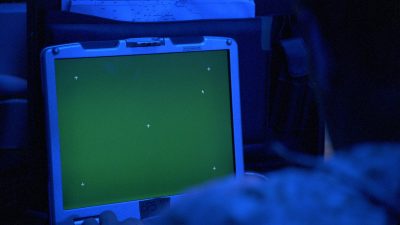
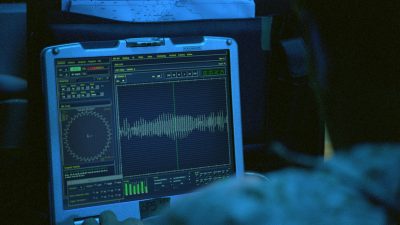
Airfield: Scenes of military movements around an airfield required vehicles and planes to be inserted into backgrounds. “We either had these models already or could create them quite quickly,” outlines Rowland. “We thought initially it going to be hard to track them as 3D objects, but then it occurred to us that the level of detail required would be a lot less, so we ended up rendering turntables of cycles of the vehicles, the plane and the Humvees with their wheels turning.”
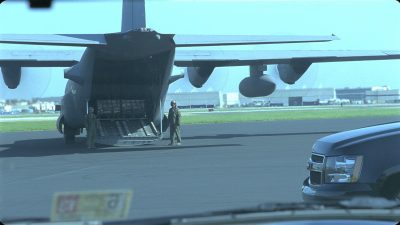
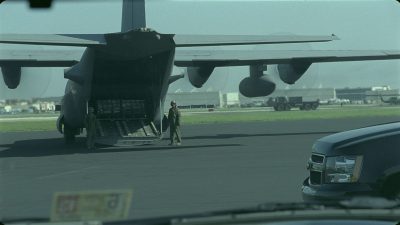
“They were pretty basic previs geometry that we made slightly higher quality,” continues Rowland. “We were able to take those and use them almost like a sprite by ascertaining what angle it was at the beginning of a shot and then at the end, and then time warp the turntable so that matched, and then track it in in 2D.” Parachute sequence: At one point Navy SEALS arrive by parachuting into the water at nightime. The scenes, however, were shot in the daytime and often with land in the plates, necessitating effects work from Nvizible. “Most of it is shot on GoPro,” says Rowland. “We had to make it look like it was over the sea. There was one shot in particular where it clearly looked like they were skydiving over mountains. For that, rather than building a skydome, we had to build a sea dome underneath the sky.”
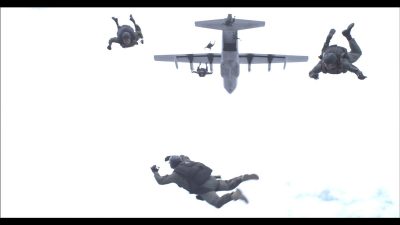
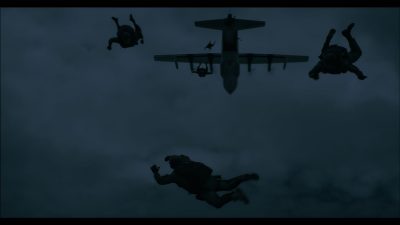
A POV shot as a SEAL lands in the water was the result of a live action re-build by Nvizible. “That was filmed during the day in bright sun with light reflecting off the water, boats all over the place and dingys to collect the parachutist,” says Rowland. “We realized that the clean-up job would be immense so we decided to scrap the whole thing and rebuild it from scratch. We tracked it, built our own sea environment and created our own skydome for the reflections in the water, but retained the splash and the foam around the diver.”
Kick-Ass 2
Nvizible was also involved in the recent film Kick-Ass 2, where the heroes return to take some fresh villains with some new sidekicks. The follow-up to the 2010 film might seem like a place where comic-book VFX abound, but in fact it features more than 300 effects shots of the invisible kind. Many of these included set extensions, panoramic views, wire removals, greenscreen comps and even face replacements for a couple of shots. Among the signature scenes was a final showdown between Hit-Girl and Mother Russia involving hundreds of pieces of glass and comic-book like trails. It was a sequence that Nvizible had previs’d as a test.
“In the end that test was a huge part of what won us the work on the job,” says visual effects supervisor Hugh Macdonald. For the final shots, production filmed at high speed while a stunt double mimed the move. Nvizible then layered in via hand animation the raining pieces of glass. “Then a whole Maya particle sim of glass raining around it was done that was effectively indistinguishable from the hero glass,” adds Macdonald. “We also added other pieces of glass that came close to camera that slow down when time slows, so you get this nice refraction through them. They were geometry built and textured in Maya but rendered inside of Nuke – so the comp’er could time to the beats of the shot.” Finally, trails were added to Hit-Girl’s hands and some pieces of glass, along with a ‘heavy vignette’ on the shot. “Hit-Girl has taken a shot of adrenaline,” explains Macdonald, “and come back from near death and it was to show how focused she was, like a Mortal Kombat ‘Finish Him’ moment.”
Katy Perry’s Roar
It currently has 193 million views on YouTube and plays more like a short film than a music video, which is why Katy Perry’s jungle-themed Roar required a large scale production. That was led by Motion Theory directors Grady Hall and Mark Kudsi, with Mirada handling post. We talk to Mirada creative director Jonathan Wu and VFX supervisor Michael Shelton about bringing the video to life with both invisible and more stylistic effects. Wu says the clip had 139 shots and most involved post production or effects. The team were also behind the one-sheet promotion poster that set the look for the video – a throwback to Tarzan, Sheena and Jane of the Jungle. “We did a lot of concept design,” notes Wu, “with a combination of digital work where we used still photos of Katy Perry that we took on set and treated it so it felt a little more aged, applying textures on top of that.”
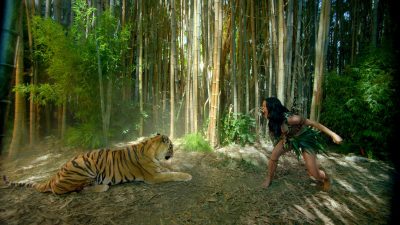
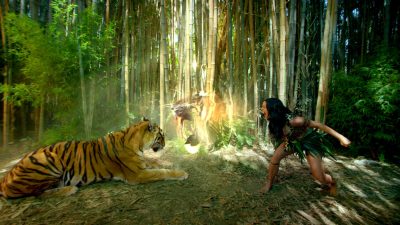
Roar opens and closes with graphic book-ends featuring a burn-in effect at the beginning and a paintbrush for the close. “We had constantly moving cameras and we had to break the artwork up and track certain pieces of it so it would transition smoothly,” says Shelton. The drawings were done on a specific frame but then they had to be held for 5 or 6 frames afterwards so that could dissolve into our live action plate on the opening and dissolve out of a live action plate into a painting at the end.” Production filmed Roar at the Arcadia Arboretum in LA on the RED EPIC, ARRI Alexa and the Canon 5D, with set pieces ranging from the crash-landed plane to swinging vines and waterfalls being part of the real environments. “Initially,” says Wu, “we had put a lot more waterfalls in the video than what you see – we went waterfall crazy!”
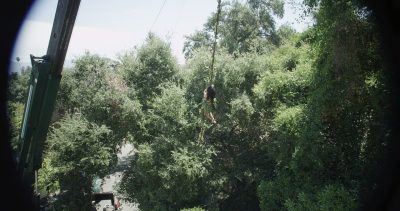
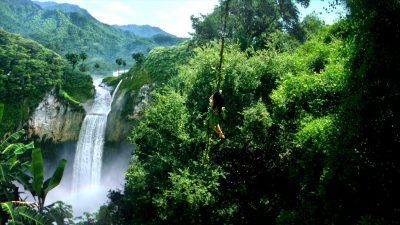
Perry also interacted with real animals from birds to an elephant and the tiger. Mirada would extend these with distant landscape matte paintings and projections, and also worked on some specific CG creations. One was the ‘tiger cam’ or the tiger POV vision shots, and another was a shot of fireflies turning into a tiger head. “The head was a rigged model animated in Maya and then exported as an Alembic cache into Houdini as a particle morph,” explains Shelton.
Orphan Black
In Space and BBC America’s Orphan Black, several identical women realize they are actually clones. To achieve the effect of having multiple versions of the same actress (Tatiana Maslany) on screen at the same time, the show’s producers looked to Intelligent Creatures for some seamless splitscreens. Orphan Black Season One – VFX Reel from Intelligent Creatures on Vimeo. Intelligent Creatures visual effects supervisor Geoff Scott told fxguide that “the one thing that really sells a clone or splitscreen shot is interaction. So we did a couple of quick tests of one clone passing another and interacting. That was something we tried to do make it feel more real and as if there were two people sharing the same space. We wanted to make sure also that the clients felt like they could do anything.” Here’s how the process broke down for a typical clone shot. The scene is filmed in a couple of takes with Maslany acting against an acting double which sets the pacing and rhythm of the scene. Then, using a Supertechno crane on a 15 foot dolly, the scene is filmed with just Tatiana on her own acting against the dialogue fed into an ear bud. The actress takes care in these scenes to observe the correct eyelines, which are set with laser points. “It was actually initially taking a lone time to set the eyelines,” says Scott, “so I bought a red dot rifle scope and we could then set the next batch of eyelines within 10 minutes. We use C-stands which also helps with focus depth. It doesn’t look like she’s staring through herself while she’s talking because sometimes if you set the eyelines too far then both clones can look like they’re doing the 1000 yard stare.”
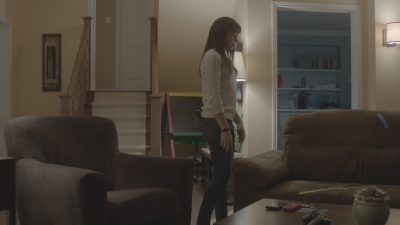
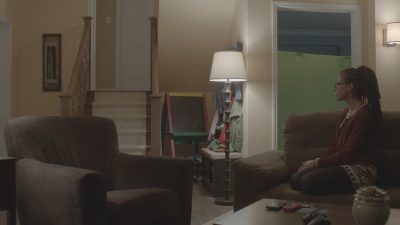
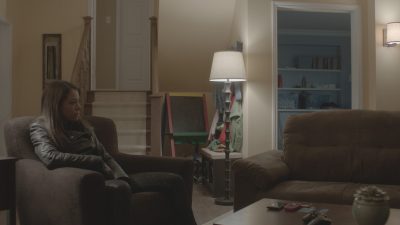
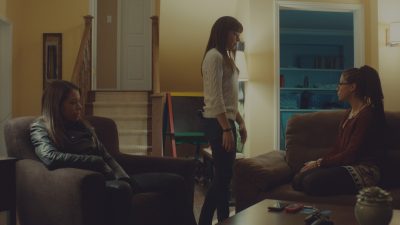
Then, the plates for any additional clones in the scene are filmed with the repeatable moves of the Supertechno and dolly. Scott notes that they did test other moco systems but found them to be too loud. “If you’re doing this kind of show with lots of dialogue,” he says, “the last thing you want to do is record all this footage and have to go in and do ADR afterwards for an entire scene.” A clean plate will also be filmed. Armed with the plates, Intelligent Creatures then gets to work compositing. “It comes down to just good roto,” says compositing supervisor Eric Doiron. “We’re very fortunate that the Supertechno allows us to get super closely aligned plates, they’re within pixels of each other so we didn’t have to do too much fudging to get this stuff to line up.” Composting takes place in Digital Fusion with close attention paid to interactive shadows and actual physical interaction between the clones in some cases. “Sometimes we’ll use a portion of the acting double’s arm if that’s appropriate where there’s direct contact,” explains Doiron. “Then it becomes a matter of hiding those seams.”
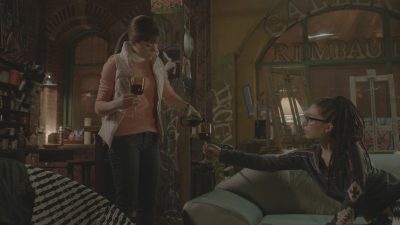
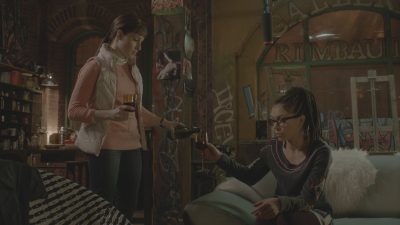
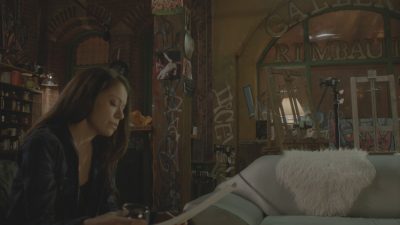
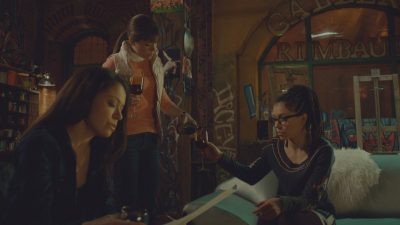
The clone shots in the first series were mostly indoors and so could be carefully controlled, although the first use of the Supertechno just happened to be an outdoor scene involving a car and two clones. “The weather when we started filming was gorgeous and bright but slightly overcast day,” recalls Scott, “but by the time we were done it was black and we had 60 km/h winds and rain. At one point the dolly got very wet and started making a horrible noise. And then when we got it we had to replace the background entirely.” But overall, the approach Intelligent Creatures has taken to the clone splitscreens provides a flexible filming scenario for the director and DOP and imbued the show with an invisible effects footprint. “The thing that we’re most proud of in the show,” says Scott, “is that the effects have received so little attention – I think that means we’ve done our jobs so well that people don’t notice it.”
